Steps to Protect Your Home Against Wildfire Threats
- April 5, 2024
- 0 comment
In the face of escalating wildfire occurrences, safeguarding homes has become a paramount concern for those living in susceptible regions. Proactive defense strategies are essential to mitigate the risk of fire damage and ensure the safety of residential properties.
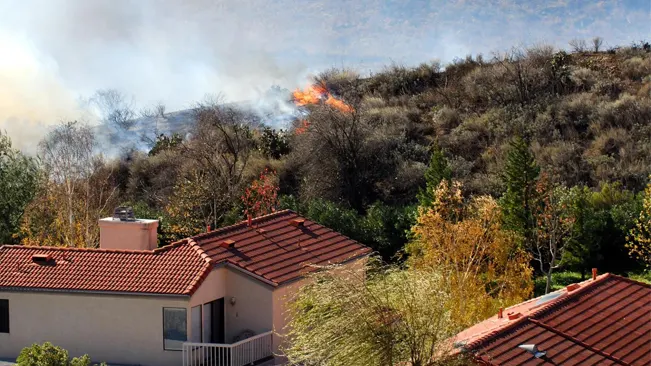
The imperative to prepare and protect is not just about preserving property, but also about safeguarding lives and the community at large. Effective defense against wildfires begins well before any threat materializes, requiring both knowledge and action.
This guide offers critical steps homeowners can adopt to bolster their home’s defenses against the unpredictable threat of wildfires.
Steps to Protect Your Home Against Wildfire Threats
- Assessing the Risks
- Creating a Defensible Space
- Fortifying Your Home
- Regular Home Maintenance
- Emergency Preparedness
5 Essential Steps to Shield Your Home from Wildfire Threats
1. Assessing the Risks
Assessing the risks is a crucial first step in protecting your home against wildfire threats. By understanding the fire history and patterns of your area, you become aware of the specific wildfire risks your home faces. This knowledge enables you to tailor your preparation and defense strategies effectively.
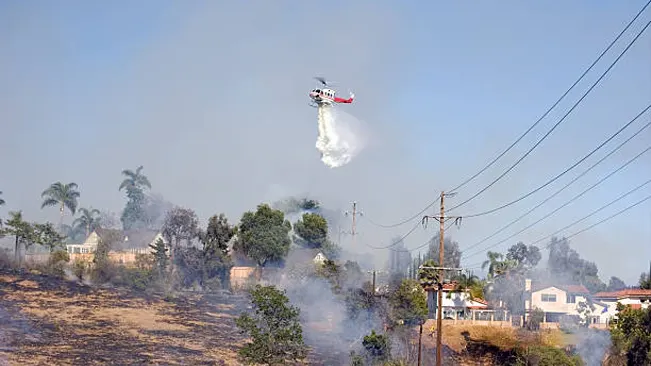
Understand Your Environment
Understanding your environment in assessing risks is crucial to protect your home against wildfire threats, as it helps identify specific local risk factors and informs tailored prevention strategies.
- Research the historical wildfire occurrences in your area to understand frequency and severity patterns.
- Identify prevalent types of vegetation and terrain in your area, as these factors can influence fire behavior and risks.
- Determine the common directions of fire spread in past events, which can be influenced by prevailing winds and topography.
Stay Informed
Staying informed about local fire weather warnings and forecasts is vital for timely preparation and response to wildfires, enabling homeowners to act proactively to safeguard their property during high-risk periods.
- Regularly check for fire weather warnings from local meteorological services. These warnings provide information about conditions conducive to fires, like dry weather, high temperatures, and strong winds.
- Subscribe to community alert systems for real-time notifications about nearby fire activity.
- Follow fire season forecasts, which predict the likelihood of wildfires based on seasonal weather patterns and environmental conditions.
2. Creating a Defensible Space
It involves clearing and maintaining an area around the property, removing or reducing flammable vegetation and other materials that could fuel a fire. This buffer zone acts as a critical barrier, slowing or stopping the spread of fire towards your home and reducing the risk of flames directly reaching your property. A well-maintained defensible space provides firefighters with a safer and more manageable environment to defend your home against advancing wildfires.
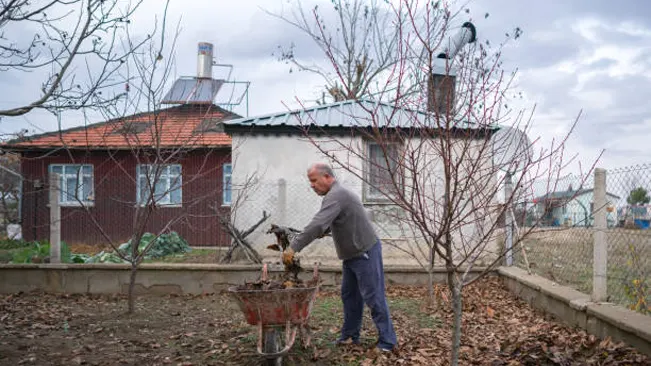
Zone 1 (Immediate Zone) – 0 to 30 feet from your home
Critical in creating a defensible space because maintaining this area free of flammable materials directly reduces the chance of a wildfire reaching and igniting your home.
- Remove all flammable materials, including dead leaves, branches, and weeds, to create a non-combustible zone.
- Regularly clean roofs and gutters to remove leaves and pine needles that could ignite from flying embers.
- Use gravel, stone, or concrete in this area instead of mulch, which can easily catch fire.
- Ensure outdoor furniture, decks, and patios are made of non-flammable materials or treated with fire retardants.
Zone 2 (Intermediate Zone) – 30 to 100 feet from your home
Essential in defensible space creation as it involves managing and spacing out vegetation, which acts as a secondary barrier, slowing down and diminishing the intensity of a wildfire before it can impact your home.
- Reduce the density of vegetation to decrease the potential for fire spread. Create space between trees and shrubs.
- Employ “low and lean” landscaping with plants that are low to the ground and not densely packed.
- Mow grass regularly to keep it short, reducing the chance of fire spread.
- Remove smaller trees and shrubs under larger trees to prevent a ground fire from climbing into the tree canopy.
3. Fortifying Your Home
This process involves upgrading your home with materials and features designed to resist fire, such as fire-resistant roofing, siding, and dual-pane windows. These modifications can prevent embers and flames from easily igniting the structure. By fortifying your home, you significantly increase its resilience against wildfires, reducing the likelihood of damage or total loss.

Roofing
- The roof is often the most vulnerable part of a home during a wildfire. Using fire-resistant roofing materials can prevent embers and flames from igniting the roof.
- Materials like asphalt shingles, metal, slate, or clay tiles offer greater resistance against fire compared to standard materials.
- Ensuring proper installation and maintenance of the roofing material is also key to its effectiveness in fire protection.
Vents
- Vents can inadvertently allow flying embers to enter the home, potentially starting a fire inside.
- Installing 1/8 inch metal mesh screens over vents can prevent these embers from getting through.
- This includes vents in eaves, soffits, gable ends, and foundation vents, as well as any other openings to the home.
Windows
- Windows can be vulnerable to the intense heat of a wildfire, potentially leading to breakage and allowing flames and embers inside.
- Dual-pane tempered glass windows have a higher resistance to heat and are less likely to shatter under fire conditions.
- Window frames should also be made of fire-resistant materials to prevent the overall window structure from failing.
4. Regular Home Maintenance
Regular maintenance of your home plays a significant role in reducing wildfire risks. This includes tasks such as cleaning gutters and roofs to remove combustible materials like leaves and twigs, and ensuring that vents are properly screened to prevent ember intrusion. Keeping your home well-maintained not only reduces fuel for potential fires but also enhances the effectiveness of other protective measures.

Gutters and Roofs
- Gutters and roofs often accumulate leaves, pine needles, and other debris. These materials can easily catch embers from a nearby fire and ignite. Regular cleaning, especially during fire season, is essential to minimize this risk.
- It’s advisable to inspect and clean gutters and roofs routinely, at least twice a year. This frequency should be increased if your home is surrounded by overhanging trees or is located in a wildfire-prone area.
- Installing gutter guards can help prevent debris accumulation. Also, consider using non-combustible materials for roofing, such as metal or tile, which are more resistant to fire.
Chimneys and Stoves
- Chimneys and stoves should be inspected and cleaned at least once a year to prevent the buildup of creosote, a highly flammable residue that accumulates from burning wood.
- Spark arrestors are crucial as they prevent embers and ash from escaping the chimney and landing on the roof or nearby flammable materials. They should be checked regularly to ensure they are clear of debris and functioning properly.
- Always follow the manufacturer’s instructions for operating stoves and fireplaces. Never leave a fire unattended, and ensure the fire is completely extinguished before leaving the house or going to bed.
5. Emergency Preparedness
Emergency preparedness is a critical component in protecting your home from wildfire threats. This includes having an evacuation plan that every household member understands, assembling an emergency kit with essential supplies and important documents, and establishing a communication plan to stay connected in case of separation. Preparedness ensures that in the event of a wildfire, your family can act quickly and safely, minimizing panic and confusion.

Evacuation Plan
- Creating a clear and efficient evacuation plan is crucial. This plan should include multiple escape routes from your home and neighborhood, as roads may be blocked during a wildfire. Regularly practicing this plan with all household members ensures everyone knows what to do in an emergency.
- Identify and agree on a meeting place outside your home and neighborhood in case family members get separated.
- Keep informed about the latest news and updates from local authorities during fire seasons. Many regions have systems for sending emergency alerts to residents.
Emergency Kit
- Your emergency kit should include non-perishable food, water (at least one gallon per person per day for several days), medications, and first aid supplies.
- Include copies of important documents like identification, insurance policies, and bank account records in a waterproof, portable container.
- Consider adding flashlights, batteries, a multi-tool, sanitation supplies, and clothing appropriate for the weather. Don’t forget about the needs of pets or service animals.
Communication
- Develop a plan for how you will contact each other and reconnect if separated. Establish a family contact outside the area who can act as a central point of communication.
- In cases where phone lines are down or cell service is unavailable, consider alternative methods of communication like text messaging, social media, or a satellite phone.
- Ensure all family members carry emergency contact information. For children, consider placing contact information in their backpacks or clothing.
Conclusion
Protecting your home from wildfire threats involves a multi-faceted approach that includes creating defensible space through strategic landscaping, using fire-resistant materials in home construction, and regular maintenance to mitigate risks. Equally crucial is the preparation for emergency situations through well-practiced evacuation plans, comprehensive emergency kits, and effective communication strategies. By implementing these proactive measures, homeowners can significantly enhance their resilience against wildfires, safeguarding not only their property but also the lives of their families and communities.
Frequently Asked Questions (FAQs)
- What is a defensible space and why is it important?
- Defensible space refers to a buffer zone around a property, created by removing or reducing flammable vegetation, which can help slow or stop the spread of a wildfire.
- How far should vegetation be cleared around my home?
- Ideally, maintain a minimum clearance of 30 feet from your home for high-risk areas. This space may need to be increased depending on the surrounding landscape and local regulations.
- What are fire-resistant plants, and how can they help?
- Fire-resistant plants are those less likely to ignite, such as those with high moisture content and non-resinous material. Using them in landscaping can reduce the fire risk to your home.
- Can the materials used in my home’s construction make a difference in fire safety?
- Yes, using non-combustible or fire-resistant materials, especially for the roof, siding, and decks, can significantly reduce the risk of your home catching fire.
- How can I make my roof more fire-resistant?
- Use fire-resistant roofing materials like metal, tiles, or treated wood, and keep gutters clean to prevent accumulation of flammable debris.
- Are there specific window types that are better for fire resistance?
- Dual-pane tempered glass windows are more effective at withstanding heat and are less likely to shatter in a fire.
- What role do gutters play in fire safety, and how should I maintain them?
- Gutters can accumulate debris which can be ignited by embers. Regular cleaning, especially in dry seasons, is crucial for fire safety.
- Should I have an evacuation plan, and what should it include?
- Yes, having a well-practiced evacuation plan is essential. It should include designated safe meeting points, multiple escape routes, and preparations for pets and livestock.
- What should be in my emergency kit for wildfire situations?
- Your emergency kit should include necessities like water, non-perishable food, medications, copies of important documents, a first aid kit, and supplies for pets.
- How can my community work together for better wildfire protection?
- Communities can collaborate through programs like Firewise, sharing resources for creating defensible spaces, and establishing communication networks for emergency situations.

Charles Hayes
Forestry AuthorI'm Charles Hayes, I bring over 15 years of specialized expertise in landscaping and woodworking, blending artistic design with sustainable environmental stewardship. My career, fueled by a profound passion for the natural world, encompasses extensive education and hands-on experience in creating harmonious, eco-friendly outdoor spaces and responsibly managing forest resources. Recognized for my professional standing, I am committed to continuous learning and certification in cutting-edge practices. My expertise is not only reflected in my work but also in my contributions to community projects, educational workshops, and collaborations with industry leaders. As an authoritative voice in my field, I strive to share knowledge and promote environmentally conscious approaches, making me a trusted resource in landscaping and forestry.







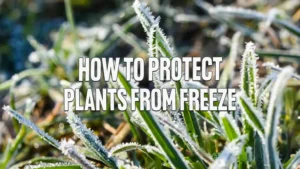




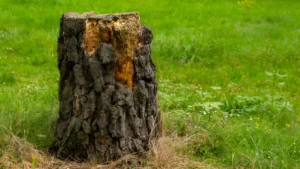
Leave your comment